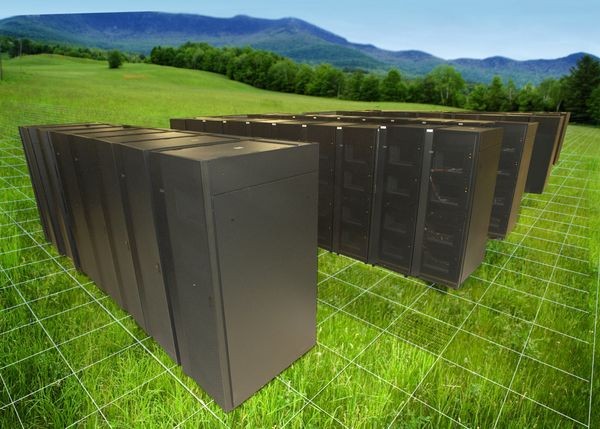Entering the Race
Computer-enhanced image of IBM’s Roadrunner
Roadrunner, with almost 20,000 microprocessors, has been used to model the decay of the U.S. nuclear arsenal, analyze financial data, and render 3D medical images in real time. Roadrunner contains some of the same processors used in Sony's PlayStation-3 game console.
Entering the Race
As microprocessor speeds continued improving in the 1980s, company after company leaped into the supercomputer market. Most failed.
By the start of the 21st century, only a handful of firms continued to make supercomputers. Among the survivors was IBM, whose Roadrunner system broke the petaFLOP barrier (one thousand trillion calculations per second!) in June 2008.
Roadrunner filled 278 refrigerator-sized racks, occupying 5,200 square feet and using 98 terabytes (a million million bytes) of memory. Fifty-five miles of fiber optic cable snaked through the system, which used the open-source Linux operating system.
How Fast Was Roadrunner?
If every one of the 6.8 billion people on Earth used a hand-held calculator to do one calculation per second, it would take them 430 years to accomplish what Roadrunner did in one day.
Roadrunner’s performance roughly equaled the computing power of 100,000 of 2010’s fastest laptops—a stack 1.5 miles high.
